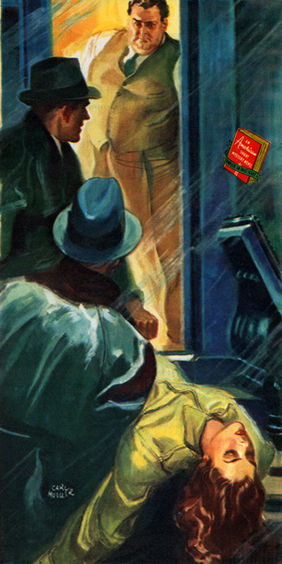Found this info in a thread on Royal Road on writing good reader-catching story blurbs by Vincent Archer. I thought it was worth sharing, his original source was a bit vague, so I couldn’t trace it. (Bolding mine for emphasis.)
The blurb is supposed to catch your readers’ attention and sell the story, not tell the story.
I’m going to pick from Author’s Society: Fiction book blurbs start with a situation (a), introduce a problem (b) and promise a twist (c). They usually end with a sentence that emphasizes the mood (d) of the story.
So you start with a catch-up sentence, since often, people will drop the blurb if they don’t like the first sentence, and you end with a kind-of-cliffhanger so that people go from blurb to story.
Blurb sample using the formula (along with ‘a’, ‘b’, ‘c’ and ‘d’) lists:
For nearly twenty years since they’ve opened, the Gilded Gates of the Infinite Labyrinth have brought power and wonders to the subjects of King George III. Fueled by the resources from the place beyond the Gates, the modern age is in full swing across the British Empire (a: situation)
But the Hordes of Napoleon are not standing still. They will not stop until they can achieve total dominance, and ending the British advantage is what they plan for (b: problem).
Jonas Sims never planned to be a Labyrinth Professional and be involved in high stakes games (c: plot twist)
Now he, and the rest of his team have to level, push themselves forward and grow beyond their origins (d: story mood)
Or the Sun may set upon the Empire at last! (final hook)
Another one to illustrate the method:
The town of Las Viadas has two sides, like the twin swings of its saloon’s entrance. One seedy, one bright, and never the two meet. (a: situation)
But sometimes, people go into the saloon and don’t come out, and that’s something sheriff Marcus can no longer ignore. (b: problem)
The thing is, sometimes people who haven’t gone into the saloon come out, and no one finds that strange. (c: twist)
Getting to the truth will not be easy, nor will it leave the sheriff untouched by the weird. (d: mood)
Unless he goes in and never goes out. (explosive suspense)
Of course, you can have a full paragraph for each part rather than one or two sentences. You just need to keep your sentences very short, to the point.
There’s lots of tried “recipes” in writing. We’ve been writing novels and doing mass market publishing for centuries now. Everyone wants to be an amazing writer, but for most of us, myself included, using tried recipes and putting our own touch on them works better than attempts at being “truly innovative”.
You can pick my story and try to see how the classic Hero’s Journey steps apply, and you’ll find they’re all there (well, except the very end, since there’s 5 chapters left). It’s all about the presentation.
Same thing for the blurbs. Classic version works nearly perfectly. The best ones follow the recipe without you realizing it’s there.
It’s not a bad little formula, and I think sells stories pretty well.
(a) Situation
(b) Problem
(c) Plot Twist
(d) Story Mood
(f) Story Hook
You could even use it to sell a story to yourself to decide if it was worth writing. Create a blurb for a story you might write, and see if it gets you exited enough to write it!
Rob

